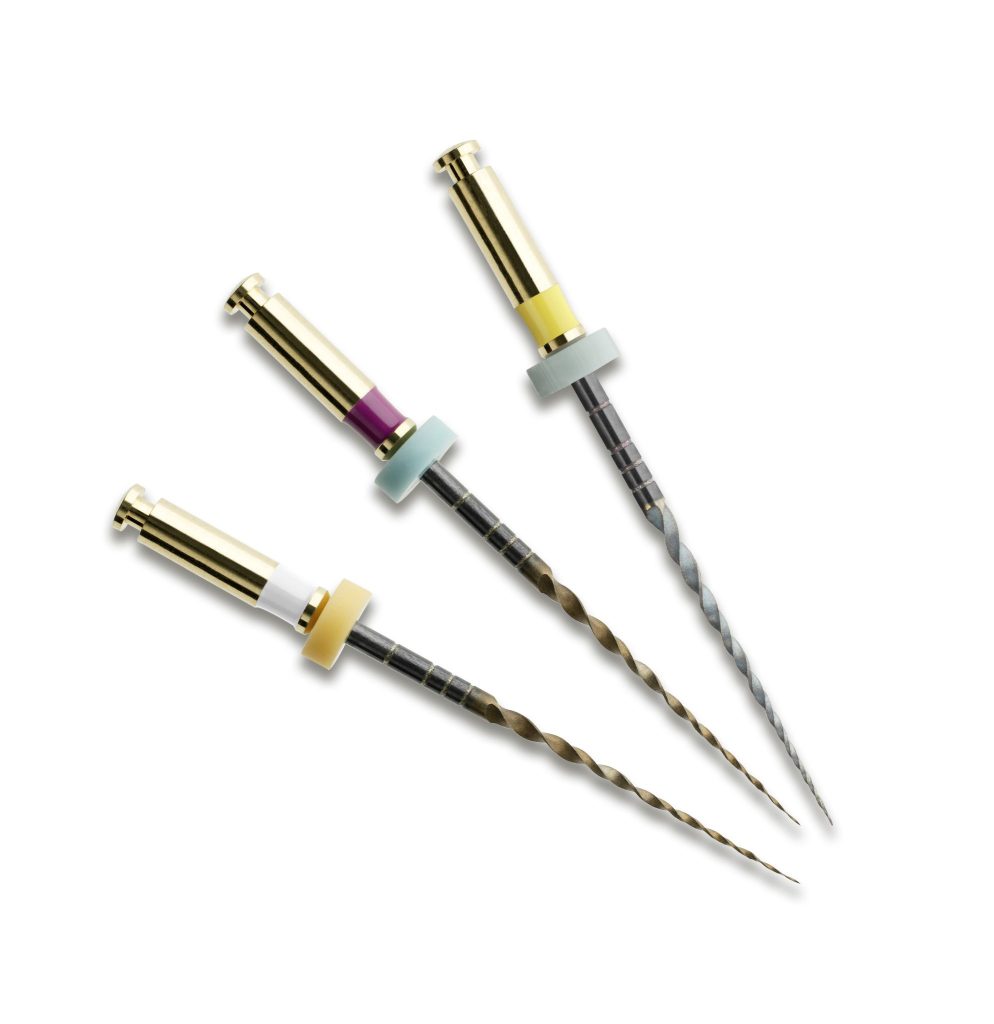How do you know when to change your file?
Featured Products Promotional FeaturesPosted by: Dental Design 27th May 2023

When carrying out endodontic treatment, it is important that you are able to make accurate judgements about the materials and instruments you are using. Endodontic files, for example, carry a degree of risk, should they fracture during a procedure. Because of this, the clinician should feel confident, at all stages of the treatment, that the instruments they use are suitable for the task. This means ensuring that they are sterile, strong, and able to function properly. If a file has been used a number of times, it is important that the clinician checks for signs of wear, and makes a decision as to whether it is better to discard the instrument, or use it during the procedure. This is an important decision, and one which can impact the outcome.
Reducing the risk to your patients
As with any dental procedure, endodontic treatment carries a number of risks. Should a file fracture during treatment, this could impact the result, as well as the patient’s confidence in your abilities. It is important to inform the patient if this happens, and recommend a course of action, which may be to remove the file, or to leave it in place if it is safer to do so.[i] By thoroughly checking your endodontic files, prior to treatment, you maximise the chances of a successful outcome, and minimise the risk of fracture. However, signs of wear may not be immediately obvious, so it’s important to understand how to properly check this, and what actions and signs may increase the risk of file separation.[ii]
How to judge if files should be discarded
Conventionally, NiTi endodontic files do not offer clear indications of wear, therefore it is hard for clinicians to predict their lifespan. This is evident when compared to files made of stainless steel which show a number of signs of increased risk of breakage, these may include unwinding flutes and shiny spots on the file. These both indicate that the file is a fracture risk, and that it should be discarded.ii Generally speaking, instruments which have experienced cyclic fatigue should be used carefully, or discarded to reduce any risk to the patient. Additionally, clinicians should discard the file if it appears to be deformed, or if they feel at all unsure about its functional ability.[iii]
 Autoclaving – damaging or strengthening?
Autoclaving – damaging or strengthening?
For any reusable instruments, autoclaving is essential. It is vital to ensure equipment is completely sterile prior to use, to reduce the risk of infection and cross contamination. This being said, research suggests that autoclaving instruments may either cause deterioration, have no effect on their function, or may actually improve the mechanical properties of the instrument. Understanding the ways in which autoclaving may affect your files can help you to predict the lifespan of the instrument, allowing you to judge when is best to discard, and when to reuse.[iv]
Research suggests that stainless steel instruments show no change to resistance to cyclic fatigue, whereas NiTi files made using electrical discharge machining (EDM) recover their original form after heat sterilisation, and actually display improved resistance to torsional fatigue. This improved efficiency is because EDM technology produces a harder surface than other file types, and other manufacturing processes, resulting in superior fracture resistance, and more efficient cutting.iv It is important to consider the effects that torsional fatigue can have on your endodontic procedures, because this could be a key reason for file fracture during endodontic treatment. For clinicians who sterilise their instruments directly before use, is it useful to be aware of the way autoclaving can affect their endodontic files, particularly if it has the potential to strengthen them, or deteriorate them.iv
HyFlex™ EDM endodontic files from COLTENE are the ideal solution for predictable and efficient root canal treatment. HyFlex™ EDM files offer clinicians a clear sign when they need to be discarded. Thanks to their controlled memory (CM) technology, when autoclaved, they rewind entirely, appearing good as new. If they do not rewind, they should be discarded. This regenerative capability is unique to the HyFlex™ range, and incredibly useful, as clinicians will know that the file is working properly, and should be used for treatment.iiHyFlex™ EDM files are also extremely flexible, offering excellent results and unmatched fracture resistance, including in extremely curved canals.
Being able to provide patients with predictable endodontic treatment is essential, so using instruments which facilitate reliable treatment processes is crucial for producing excellent outcomes. Even though it can be challenging to assess the lifespan of your dental instruments, using quality equipment will be beneficial to you, enabling you to provide more predictable treatment. However, if you are at all unsure about the structural integrity of the instrument, it is generally more sensible to discard it than to risk file fracture during the procedure.
![]()
For more on COLTENE, visit www.coltene.com,
email info.uk@coltene.com or call 0800 254 5115.
Author: Mark Allen, General Manager at COLTENE
[i] Madarati, A., Watts, D. & Qualtrough, A. Factors contributing to the separation of endodontic files. Br Dent J 204, 241–245 (2008).https://doi.org/10.1038/bdj.2008.152 https://www.nature.com/articles/bdj.2008.152
[ii] Singh, H., and P. Kapoor. “Hyflex CM and EDM Files: Revolutionizing the art and science of Endodontics.” Journal of Dental Health, Oral Disorders & Therapy 5.7 (2016): 5-8. https://www.researchgate.net/profile/Harpreet-Singh/publication/312658413_Hyflex_CM_and_EDM_Files_Revolutionizing_the_Art_and_Science_of_Endodontics/links/5ae85609aca2725dabb39bb8/Hyflex-CM-and-EDM-Files-Revolutionizing-the-Art-and-Science-of-Endodontics.pdf
[iii] You, Sung-Yeop, et al. “Lifespan of one nickel-titanium rotary file with reciprocating motion in curved root canals.” Journal of Endodontics 36.12 (2010): 1991-1994. https://www.researchgate.net/profile/Kee-Yeon-Kum/publication/49624065_Lifespan_of_One_Nickel-Titanium_Rotary_File_with_Reciprocating_Motion_in_Curved_Root_Canals/links/602a152d4585158939a65eec/Lifespan-of-One-Nickel-Titanium-Rotary-File-with-Reciprocating-Motion-in-Curved-Root-Canals.pdf
[iv] Dioguardi, Mario, et al. “Effects of hot sterilization on torsional properties of endodontic instruments: systematic review with meta-analysis.” Materials 12.13 (2019): 2190. file:///Users/officeone/Downloads/materials-12-02190.pdf








